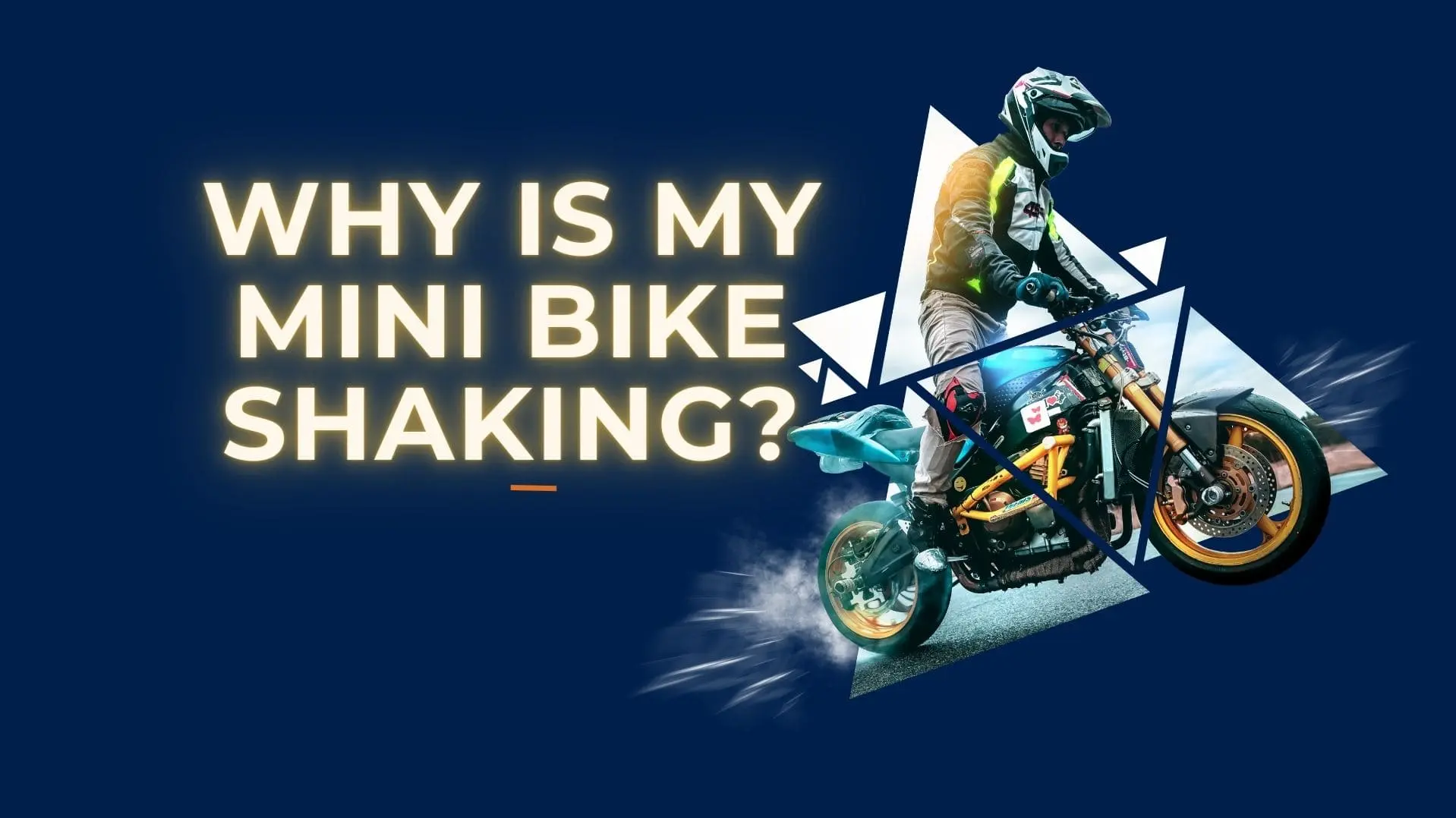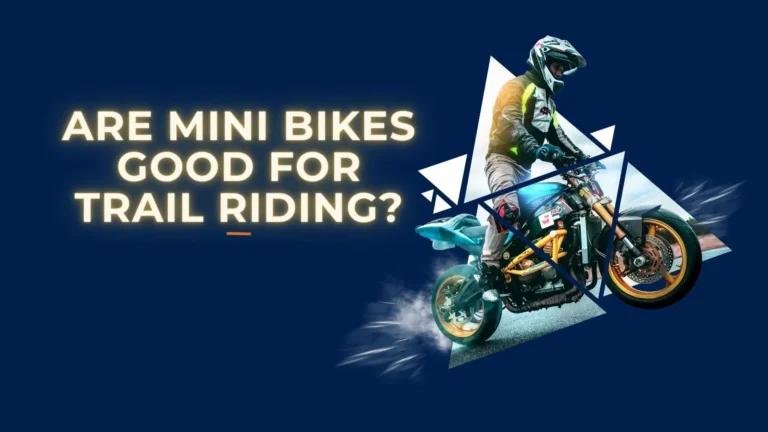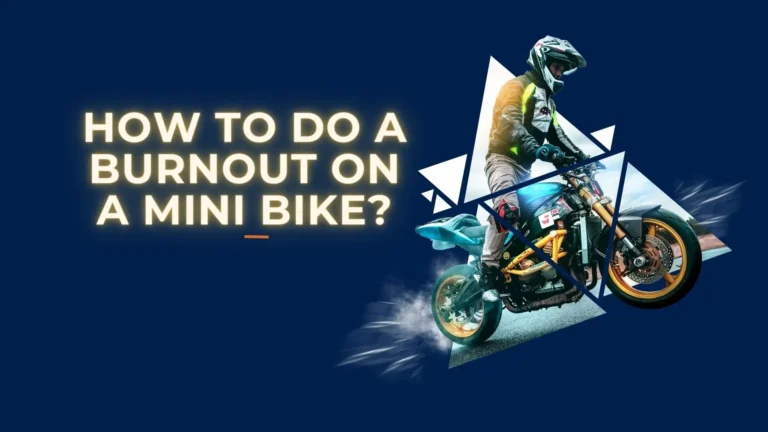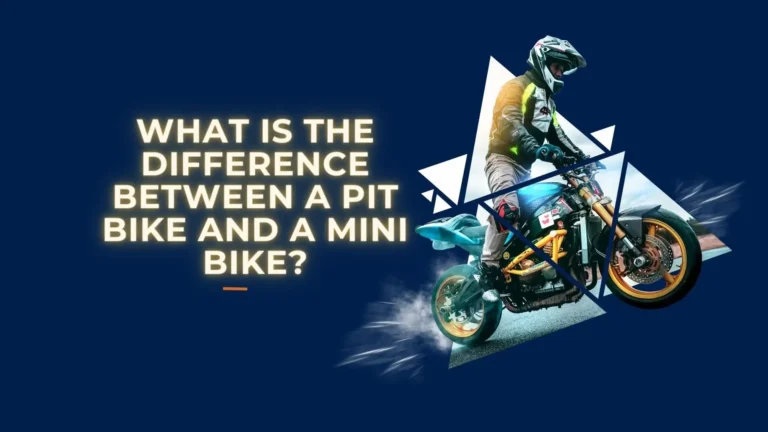Why is My Mini Bike Shaking?
As someone who has repaired many shaky mini bikes, I know how frustrating excessive vibration can be. By methodically testing and diagnosing the cause, you can get your two-wheeled adventurer running smoothly again.
In this article, I’ll share my proven process for diagnosing and fixing a rattling mini bike based on many firsthand repairs.
When your mini bike starts shaking, the first step is diagnosing why, says Adam Smith, a mini bike technician from Street Rider of Reno Reno, NV. “Diagnosing the source of the shaking requires a systematic approach,” Adam Smith advises, “Start by feeling where the vibration seems most pronounced to provide clues if it’s the front or rear of the bike. Check the wheels and tires first.
Then inspect the drivetrain. Issues with engine mountings could point to the engine being the culprit. Checking all potential points methodically is key to narrowing down the root cause.” Methodically inspecting each system and component will help isolate the problem. Pay attention to when and how the shaking occurs as this will further point to the faulty area.
Key Takeaways
- Engine issues like crankshaft imbalance, worn drivetrain components, and loose engine mounts are common causes of shaking.
- Bent or damaged wheels and tires as well as improper tire pressure can lead to vibration and wobble.
- Loose hardware throughout the mini bike chassis can amplify vibrations if not tightened properly.
- Cracks or damage in the frame and incorrectly set up suspension can cause stability and shaking problems.
- Pay attention to when and under what conditions the vibration happens to isolate the issue.
- Methodically test and inspect components to pinpoint problems instead of randomly replacing parts.
- Tightening all hardware, upgrading damaged components, adjusting suspension, and proper bike setup will resolve most vibration issues.
- With patience and a systematic approach, you can diagnose the root cause of the shaking and get your mini bike running smoothly again.
Possible Causes of a Shaking Mini Bike
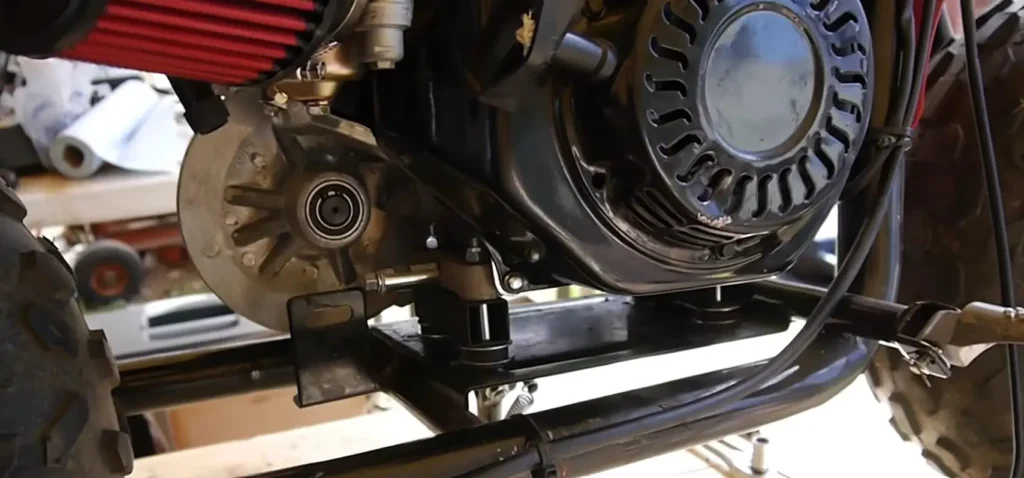
When diagnosing what’s causing unwanted vibrations, be methodical and start with the engine:
Engine Imbalance:
- Excessive shaking points to crankshaft imbalance.
- Some vibration is normal, but too much indicates a problem.
Fixes:
- Dynamically balance the existing crankshaft.
- Swap in a known good crank from a donor bike.
Drive Train Issues
- Worn sprockets and damaged drive components can vibrate.
- Loose fasteners allow components to move and vibrate.
- Improper chain adjustment also creates excess movement.
Solutions:
- Inspect each component carefully.
- Replace any damaged parts.
- Tighten all hardware to spec.
- Adjust chain tension properly.
Other Areas to Inspect:
- Frame damage or loose joints
- Suspension problems
- Bent wheels or rims
- Tire pressure/balance
Fixing Vibration from Wheels and Tires
When It Happens
- Wobbling and shaking at higher speeds points to wheel and tire issues.
Causes
- Bent rims or unbalanced wheels lead to wheel wobble.
- Underinflated tires allow bouncing of the chassis.
- Uneven tire wear or flat spots disrupt balance.
Inspection and Repair
- Check wheels closely for any damage or wobble.
- Have the shop dynamically balance wheels.
- Inflate tires to proper air pressure.
- Replace excessively worn tires.
Prevention
- Ensure proper wheel alignment to minimize wear.
- Upgrade to better quality wider tires for stability.
- Regularly inspect and address wheel/tire issues before they compound.
Solid wheels and fresh rubber keeps the ride smooth and vibration free at speed. Don’t overlook your mini bike’s shoes.
Stopping Vibrations from Loose Parts
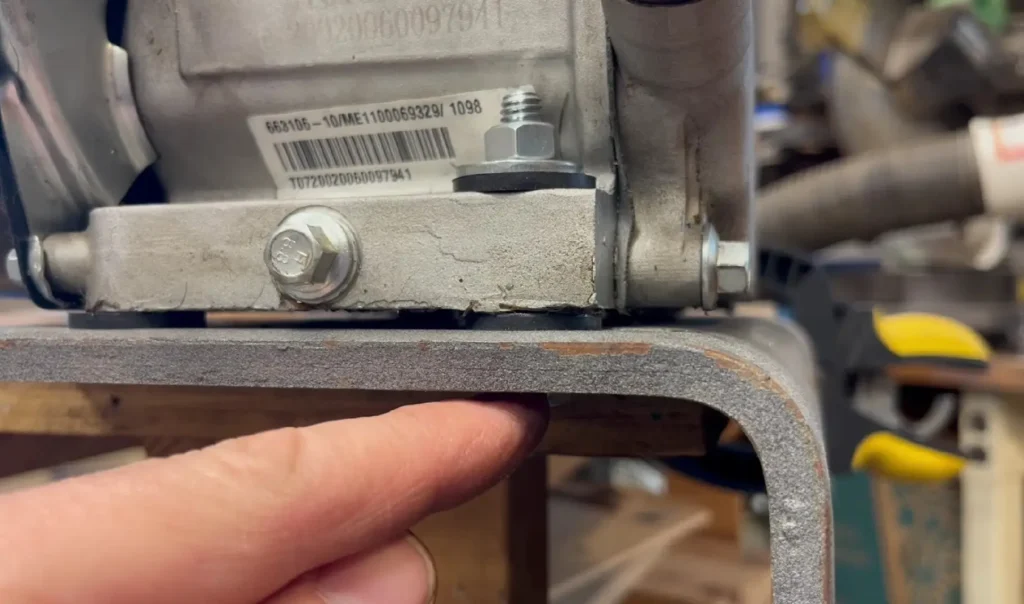
The Issue
- Small loose components can amplify vibrations throughout the bike.
- Things like loose handlebars, footpegs, and engine mounts will shake when accelerating.
Inspection and Repair
- Methodically inspect every mounting point and fastener.
- Tighten all hardware to manufacture torque specs.
- Use thread locker on critical fasteners – engine, transmission, suspension.
Priority Areas
- Engine mount bolts – loose mounts increase vibration transfer.
- Isolation mounts – replace any cracked or deteriorated mounts.
- Footpegs/controls – tighten any with play to prevent buzzing.
- Check luggage rack and accessory mounts too.
Prevention
- Eliminating any looseness prevents vibrations amplifying.
- Stay diligent in securing chassis and components.
- Tight bikes run smoother and more reliably.
Routine maintenance is key to minimizing vibration issues, says mini bike technician Smith. His top tips:
- Inspect and inflate tires before each ride. Replace worn rubber.
- Check for loose hardware throughout the bike and tighten as needed.
- Lubricate the chain regularly to prevent wear.
- Change oil per manual recommendations.
- Monitor wheel bearings and repack/replace when needed.
- Periodically align the rear wheel and chain.
- Replace worn engine mounts early.
- Adjust engine timing/carb if experiencing high RPM surging.
- Address any engine issues immediately before greater damage.
“Doing basic service tasks routinely prevents many shaking problems before they start,” Smith says. “It’s cheaper to maintain than repair later. Be proactive.”
Prioritizing preventive maintenance identifies small issues before they become major. Follow Smith’s straightforward advice to keep your mini bike running smooth.
Frame Issues Causing Vibration
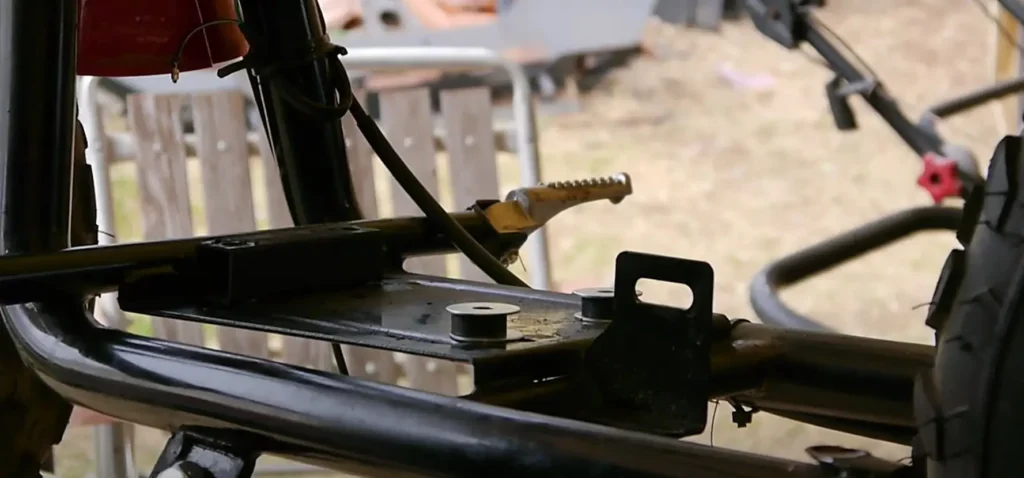
The bike’s frame provides the foundation for all components. Any compromises in its integrity can lead to flexing and vibration.
Inspect The Frame Carefully
- Remove components to expose all welds and joints.
- Check for:
- Cracking around welds or tubes
- Loose or separated joints
- Damage like dents or bent tubes
- Focus on high-stress areas:
- Engine mounts
- Steering head
- Suspension pivots
Repair Damaged Areas
- Re-weld any cracked seams after prepping the surface.
- Reinforce loose joints with braces and plates to reduce flex.
- Consider upgraded gussets at key areas like the steering head.
Prevent Further Issues
- Touch up paint makes it easier to spot new cracks.
- A fresh powder coat also cleans up the look.
- Don’t ignore frame damage – problems will compound over time.
Fixing High Speed Wobble
Cause
- At higher speeds, poor weight distribution can allow instability and wobbles.
Prevention
- Center rider weight evenly over both wheels.
- Confirm suspension is adjusted properly for the rider and conditions.
- Stiff suspension and improper damping can lead to wobble.
Troubleshooting
- Adjust suspension softer initially to isolate issues.
- Move weight distribution forward or backward.
- Make small changes and test top speed stability.
Upgrades
- Quality shocks properly sprung for weight help stability.
- Extend swingarm length for increased high speed stability.
- Stiffer fork springs and thicker damping oil reduce oscillations.
Getting the rider position and suspension dialed in prevents high speed wobbles.
Conclusion
A vibrating mini bike can be annoying and potentially detrimental long-term. But identifying the root cause through methodical troubleshooting and making targeted repairs can get you back to smooth sailing.
Key points to remember:
- Note when and how shaking occurs to isolate the faulty system.
- Inspect components thoroughly – don’t just replace parts randomly.
- Tighten all hardware to spec and ensure rubber isolation where needed.
- Upgrade wheel/tires, drivetrain, and frame elements as required.
- Adjust engine, suspension, and rider position properly.
With some patience and diagnostic testing, you can pinpoint the issue and correct it. Investigating the specific causes we’ve covered can get your mini bike running vibration-free again. Just take things step-by-step.
Before you know it, you’ll be back to enjoying carefree rides instead of white-knuckle ones. Don’t settle for a shaky ride – get out there and shake down those vibrations for good!


